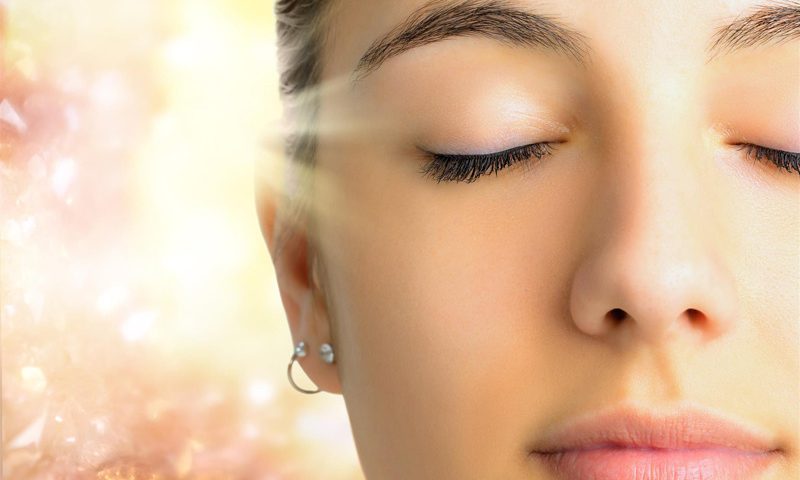
Fight Burnout with Yoga
17th August 2018
Yoga and Music, the Beauty of Collaboration
24th August 2018How can yoga help ear, nose and throat problems?

When practised regularly, yoga can have a range of positive effects on the body. From lowering stress levels to relieving chronic pain, yoga can benefit all sorts of conditions. Research suggests that the therapy can even help ear, nose, and throat problems. Depending on the cause, yoga can combat balance issues, ear pain, blocked sinuses, and even acid reflux. Better still, all you need to get started is a loose-fitting yoga top and a comfy mat. In this article, we explore how yoga can help ear, nose and throat problems in more detail.
Balance issues
One of the most common reasons that people visit A and E is balance problems. Feeling off-balance can be scary, and many people fear the worst when they encounter it. However, balance issues are normally linked to problems with the ears; although they may feel uncomfortable, they are rarely a sign of anything more sinister. Many people don’t realise that our ears are an essential part of our balance system. This means that we can start to feel unsteady if they become blocked.
Balance problems can also be related to muscle tension – especially in older individuals. If you take a trip to A and E, it is likely that the doctor will suggest vestibular rehabilitation if your ears look healthy. During vestibular rehabilitation, you will practice exercises that relax the head and shoulder muscles to improve balance and coordination. As the exercises are designed to relax the muscles, many people compare ves-tibular rehab to yoga.
If you want to save yourself a trip to the hospital, try some basic vestibular rehab at home. There are a number of asanas that are designed to relieve tension from the head and shoulder muscles including Childs Pose and Corpse Pose. Practising these postures regularly can also relieve tinnitus. Yoga can also be used to prevent the deterioration of the balance system as we grow older. Static postures like Eagle Pose and Mountain Pose are good for this and can be practised with the support of a wall for those suffering from vertigo.
Ear and Jaw Pain
If you’re suffering from ear pain, you could be experiencing referred pain from the jaw. While hundreds of people head to the doctor each year for ear pain, only a small percentage of them are suffering from an ear infection. Jaw related ear pain is diagnosed as temporomandibular joint dysfunction and is caused by built up muscle tension. Although this tension can occur in a number of ways, it is often caused by teeth grinding during the night.
Learning how to relax the jaw through yoga can help to reduce pain and prevent future tension from occurring. Jaw related ear pain can also be treated with trigger point therapy. Trigger point therapy is carried out using rubber massage balls to massage out the tension in the jaw.

Sinusitis
Blocked sinuses are another common problem, especially in the winter months. If the sinuses are unable to drain properly, they start to become inflamed and swollen. Known as sinusitis, clogged sinuses can become painful if left untreated. Although it may be uncomfortable to practice yoga with sinusitis, there are a few techniques that can ease the pain. The most popular technique involves distilled water, salt, and a plastic bottle. Although any squeeze bottle will do, health professionals recommend the Neti Pot for best results.
Once your sinuses are a little more comfortable, you can further reduce the pain with yoga. Many practi-tioners find that going upside-down eases sinus pressure; with this in mind, postures such as Bridge Pose, Downward Dog, Supported Shoulderstand, and Plow Pose can be beneficial. Humming can also help the sinuses by increasing airflow between the sinuses and nasal cavities.
Acid Reflux
Acid reflux is another issue that can be reduced by yoga. If you’re suffering from acid reflux, you may feel acid moving up the back of your throat. This is caused by the lower oesophageal sphincter relaxing too much and letting stomach acid enter the oesophagus. This typically occurs after eating a meal too fast or consuming food that is too fatty. If you start to experience acid reflux, the first thing to do is to eat slowly and evaluate your diet. If you still experience symptoms, try using yoga to strengthen the diaphragm. The best way to strengthen the diaphragm is by using pranayama. Practising a diaphragm-toning breathing technique can strengthen the muscle and prevent acid reflux. The best breathing techniques to alleviate symptoms are Kapalabhati and Agni Sara Kriya.
In Summary
If you’re using yoga to help ear, nose, and throat problems, it’s important to consider all aspects of the practice. Although asana practice will tone and strengthen the muscles, pranayama should be used along-side for best results.
Even if you’re not experiencing ear, nose, or throat pain, practising yoga regularly can help to prevent issues from occurring. As we age, it’s not unusual for our balance to get worse. Practising asanas that help with coordination can prevent poor balance from occurring. Any type of yoga helps to keep our body functioning correctly as we age. It also lowers our stress levels, blood pressure, and keeps the heart healthy for a long and happy life.
Whether you’re hoping to combat ear, nose or throat problems, yoga can help you to achieve your goal. Better still, it is inexpensive to practice and could save you money on medication later down the line. To practice yoga, all you need is a quiet space in your house and some breathable yoga clothes. A good-quality yoga bra will keep you supported whilst you practice and a light-weight top will allow the body to oxygenate sufficiently.

